Georgetown Wet Weather Treatment Station
King County’s state-of-the-art Georgetown Wet Weather Treatment Station is one of several climate-resilient facilities that are better protecting Puget Sound from stormwater and wastewater.
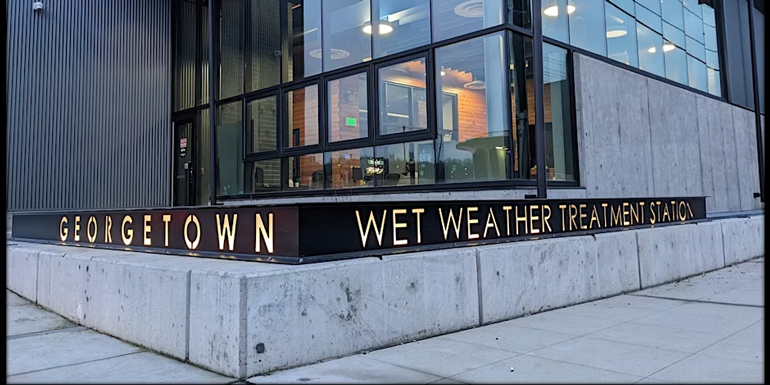
The Georgetown Wet Weather Treatment Station is located at the corner of 4th Avenue and South Michigan Street in Seattle’s Georgetown neighborhood. The station earned the coveted “Platinum” designation from the Institute for Sustainable Infrastructure’s Envision rating system. This is the first Platinum-awarded Envision project in Washington and recognizes the County’s commitment to sustainable communities and the environment.
Educational programming and tours
We offer education programing and public tours of Georgetown Wet Weather Treatment Station. Come learn about what a Wet Weather Treatment Station is, how the process works, and the importance of clean water.
Visit our education page to learn more about these programs and view the events calendar to see what else is coming up.
Upcoming programs and facility announcements
Join us for a Georgetown Wet Weather Facility Tour
Saturday, September 13, 10 am to 12 pm
We are excited to invite the community to tour the new Georgetown Wet Weather Treatment Station (GTWWTS). This new state-of-the art facility treats up to 70 million gallons of combined rainwater and wastewater during heavy winter rain events. Join us for a community tour and learn how this facility is improving water quality of the Duwamish River. We will walk through the treatment process and tour the extensive green stormwater features onsite Attendees will leave with a deeper knowledge of how they can protect our waterways.
Tour involves walking up and down 2-3 flights of stairs. Closed toed shoes and long pants are required. The majority of the tour is outside.
What happens at the Georgetown Wet Weather Treatment Station?
When there are storms, rainwater runs off surfaces like roads, sidewalks, and buildings and picks up pollutants. This water, called stormwater runoff, is the leading threat to Washington’s urban waters. The Georgetown Wet Weather Treatment Station can treat up to 70 million gallons of combined rain and wastewater a day that would otherwise discharge directly to the Duwamish River during heavy storms.
Take a Tour of King County’s new Georgetown Wet Weather Treatment Station
Treatment process
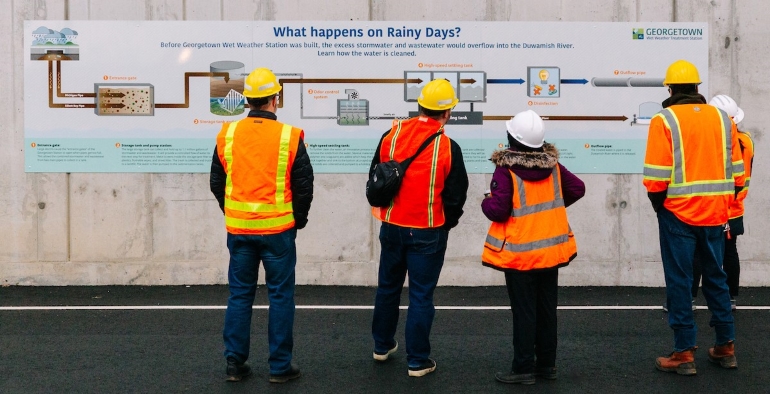
Treatment process at Georgetown Station on rainy days. Learn more about the steps in the process:
1. Entrance gate
Large storms cause the "entrance gates" of the Georgetown Station open when the pipes get too full. This allows the combined stormwater and wastewater from the two main pipes to collect in a tank.

2. Storage tank and pump station
The large storage tank can collect and hold up to 1.1 million gallons of stormwater and wastewater. It will provide a controlled flow of water to the next step for treatment. Metals screens inside the storage tank filter out plastics, flushable wipes, and street litter. The trash is collected and trucked to a landfill. The water is then pumped to the sedimentation tanks.

3. Odor control
Smelly air is collected from the treatment station, cleaned with carbon filters, and then released.
4. High-speed settling tank
To further clean the water, an innovative process is used to remove the solids from the water. Several materials (sand, polymer and coagulant) are added which help the solids particles stick together and sink to the bottom at a rapid speed. The solids are collected and pumped to a holding tank.
5. Solids holding tank
Solids from the bottom of the sedimentation tank are collected and then sent to West Point Treatment Plant where they will be processed into Loop biosolids. Loop is transported to farms and forests and is used to enrich the soil for growing plants and trees.

6. Disinfection
After the solids have been removed from the water, the clean water is disinfected using ultraviolet (UV) light. The ultraviolet light kills any remaining germs in the water.
7. Outflow pipe
The treated water is piped to the Duwamish River where it is released.

Sustainability at the facility
King County is committed to sustainable construction practices as well as sustainable facilities.
- The construction team recycled and reused project materials during demolition and construction. Five buildings and about 7,000 tons on contaminated soil were removed from the site, and concrete and old growth timber beams from some of the demolished buildings were salvaged for reuse. View this video to learn more.
- King County is using Green Stormwater Infrastructure (GSI) at the Georgetown Station to protect water quality. GSI uses plants, trees, soil, and engineering inspired by nature to manage stormwater and keep pollutants out of our waterways.
- Installation of solar panels on top of the UV treatment areas roof and the administration/education building reduces reliance on the electrical grid.
- The Georgetown WWTS earned the coveted “Platinum” designation from the Institute for Sustainable Infrastructure’s Envision rating system.
How do green roofs reduce stormwater runoff?
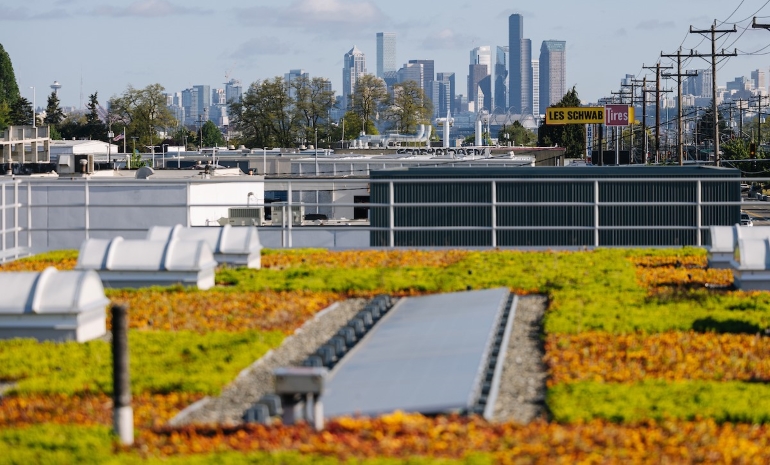
Green roofs help urban areas act more like a forest. The plants absorb pollutants, like dust and smog, from the air. Soil allows the plants to grow while slowing down and absorbing rainwater, keeping it from overwhelming stormwater pipes during heavy rains. Learn more about green roof benefits.
Other sustainable features
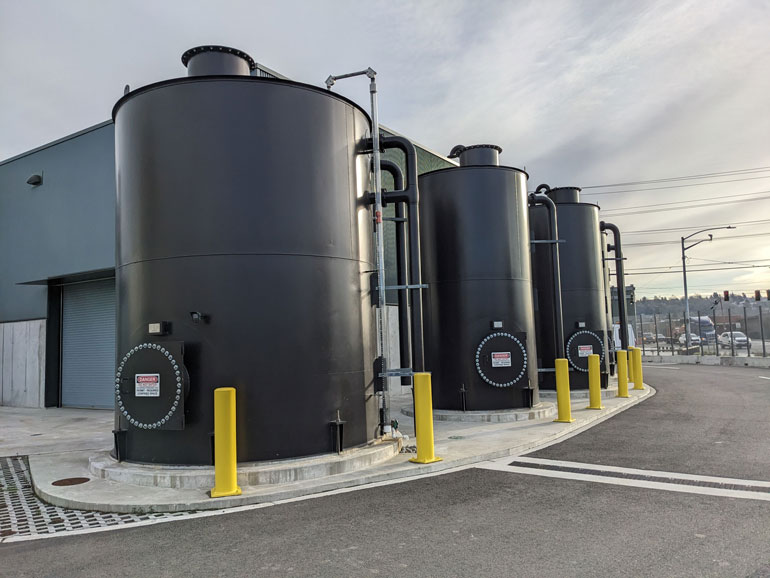
Cisterns can store more than 35,000 gallons of rainwater from the station's roof each year. The stored water is used to water the station's plants and trees, which will improve air quality.

182 solar panels on the UV treatment area roof will generate enough electricity to potentially cover all electricity needs of the facility while it is not treating water. There is also a 6 solar panels on top of the administration/education building contributing electrical power to the facility.
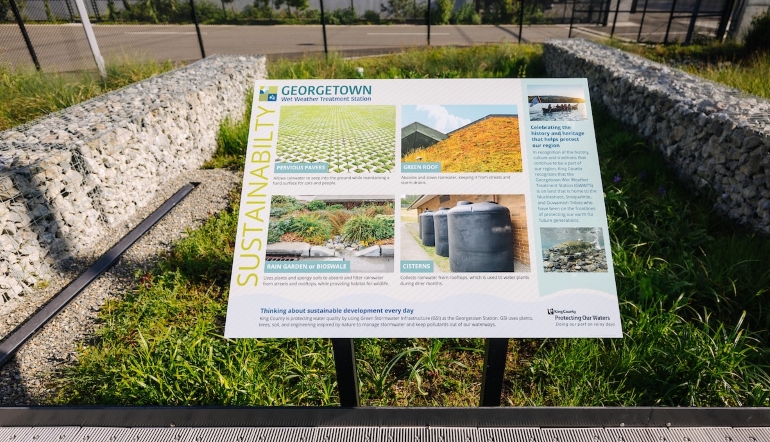
Rain gardens or bioswales use plants and spongy soils to absorb and filter rainwater from streets and rooftops, while providing habitat for wildlife.
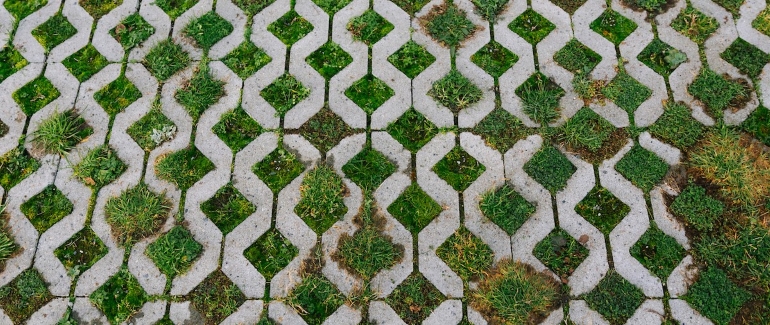
Pervious pavers allow rainwater to seep into the ground while maintaining a hard surface for cars and people.

Approximately 35 trees were planted on the former industrial site to improve air quality, provide shade, slow rainwater runoff and provide habitat.

 Translate
Translate